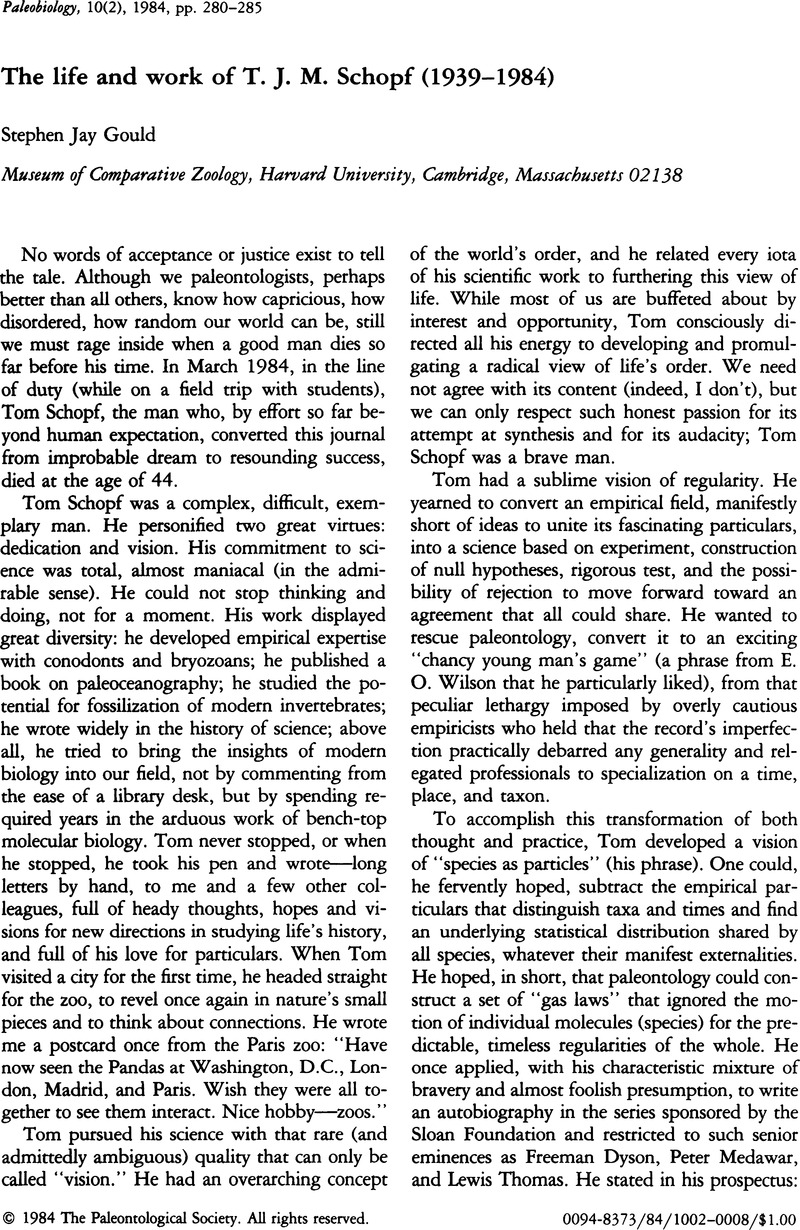Crossref Citations
This article has been cited by the following publications. This list is generated based on data provided by Crossref.
Sepkoski, David
2005.
Stephen Jay Gould, Jack Sepkoski, and the ‘Quantitative Revolution’ in American Paleobiology.
Journal of the History of Biology,
Vol. 38,
Issue. 2,
p.
209.
Princehouse, P.
2016.
Encyclopedia of Evolutionary Biology.
p.
198.
Rudwick, Martin J. S.
2018.
The Fate of the Method of ‘Paradigms’ in Paleobiology.
Journal of the History of Biology,
Vol. 51,
Issue. 3,
p.
479.
Dresow, Max
2019.
Gould’s laws: a second perspective.
Biology & Philosophy,
Vol. 34,
Issue. 5,



